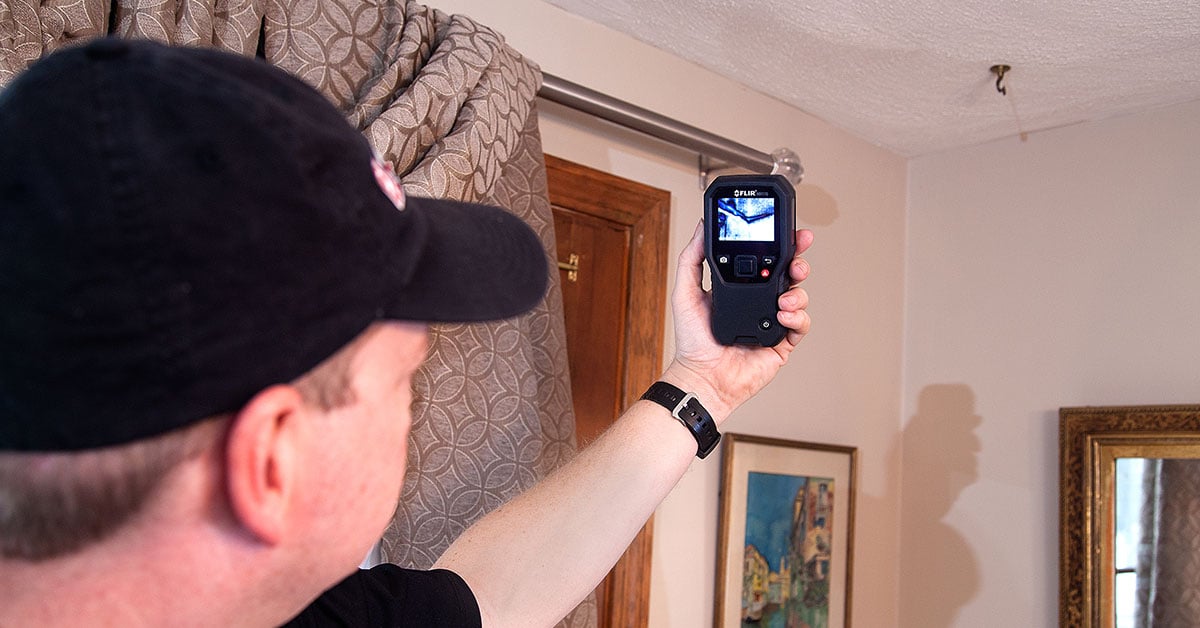Comprehensive Guide to Water Leak Detection for Property Owners and Businesses
Comprehensive Guide to Water Leak Detection for Property Owners and Businesses
Blog Article
Innovative Solutions for Early Discovery of Water Leaks in Buildings and Framework
From innovative leak discovery technologies to the deployment of IoT sensing units for real-time surveillance, the landscape of leakage prevention is advancing rapidly. Automated water flow analysis systems are reshaping just how leaks are recognized and dealt with, leading the way for a proactive method to water leakage discovery.
Advanced Leak Discovery Technologies
Advanced leak discovery modern technologies, furnished with cutting-edge sensors and formulas, play a critical role in swiftly identifying and pinpointing water leakages in numerous settings. These innovations utilize a mix of acoustic, thermal, and electro-magnetic sensing techniques to find leakages precisely. Acoustic sensors spot the audio of running away water, permitting for accurate localization of the leakage resource. Thermal imaging spots temperature level modifications caused by water leakage, offering one more effective method for leak identification. Electromagnetic sensors can recognize changes in electromagnetic areas created by water, providing yet another layer of leakage detection ability.

IoT Sensors for Real-Time Tracking
In the realm of modern water leakage detection, the combination of IoT sensors for real-time surveillance stands for a critical development in improving aggressive leak discovery capabilities. These sensors provide continual surveillance of water supply, providing real-time data on water circulation prices, pressure variations, and temperature changes. By leveraging IoT modern technology, these sensors can spot also the smallest anomalies in water usage patterns, enabling very early recognition of prospective leakages prior to they rise into significant concerns.
IoT sensing units send data to a centralized system, where sophisticated algorithms evaluate the info and generate informs or notices when irregularities are found. This real-time monitoring ability enables home owners or center supervisors to without delay resolve leaks, lessening water damage, reducing fixing prices, and conserving water sources.
Additionally, IoT sensors can be incorporated with structure administration systems, enabling automated reactions to identified leaks, such as closing off water shutoffs or activating pumps to alleviate the influence of leaks. In general, the execution of IoT sensing units for real-time surveillance dramatically boosts the effectiveness and effectiveness of water leak detection in structures and facilities.
Artificial Intelligence Algorithms for Leakage Forecast

One trick benefit of making use of artificial intelligence for leakage forecast is its capacity to constantly find out and improve its accuracy in time. As even more data is accumulated and fed into the algorithm, it can improve its forecasts and adjust to altering conditions, eventually enhancing the dependability of leak discovery systems.
In addition, artificial intelligence formulas can assist in identifying refined indications of leaks that may go undetected by standard monitoring techniques. water leak detection. By analyzing intricate information collections in real-time, these formulas can provide very early cautions and informs, enabling prompt intervention and precautionary maintenance to alleviate potential water damages and connected prices
Using Thermal Imaging for Leak Discovery
Thermal imaging modern technology uses a promising method for spotting water leaks in numerous systems and facilities. By using infrared radiation and temperature variations, thermal imaging cams can recognize covert leaks that are not quickly noticeable to the naked eye.
One of the essential advantages of thermal imaging for leakage discovery is its non-intrusive nature. Unlike standard techniques that may need burglarizing wall surfaces or floors to find leaks, thermal imaging enables for non-destructive screening. This not only conserves time and minimizes prices but also reduces disturbance to the building or framework being examined. Furthermore, thermal imaging can swiftly check large areas, providing an extensive overview of potential leakage sources in a prompt way. Overall, the usage of thermal imaging technology enhances the performance and accuracy of water leak discovery, making it a useful device for preserving the honesty of structures and infrastructures.
Automated Water Flow Analysis Systems
How can automated water circulation analysis systems change the discovery and management of leakages in numerous systems and infrastructures? Automated water flow analysis systems use a proactive approach to leak discovery by constantly keeping track of water circulation prices and patterns. By developing baseline data, these systems can swiftly identify deviations that may suggest a leakage, enabling timely treatment to stop comprehensive damages.
These systems utilize sophisticated formulas to examine real-time data and provide immediate notifies when anomalies are found, permitting quick activity to be taken. In addition, computerized water circulation evaluation systems can be integrated with structure administration systems or IoT systems, improving overall efficiency and enabling remote surveillance capacities.
Furthermore, the information collected by these systems can be used for Your Domain Name predictive upkeep purposes, assisting to determine potential powerlessness in the facilities before leaks happen. On the whole, the application of computerized water circulation evaluation systems can substantially improve leak discovery and management methods, inevitably leading to set you back savings, minimized water wastefulness, and raised sustainability in buildings and infrastructure.

Conclusion
Finally, the integration of advanced leakage detection modern technologies, IoT sensing units, artificial intelligence algorithms, thermal imaging, and automatic water flow evaluation systems provides ingenious solutions for early discovery of water leakages in structures and framework. These technologies allow real-time tracking, prediction of leaks, and efficient detection approaches to avoid water damage and waste. Executing these remedies can aid in maintaining the honesty and sustainability of water systems in various settings.
Report this page